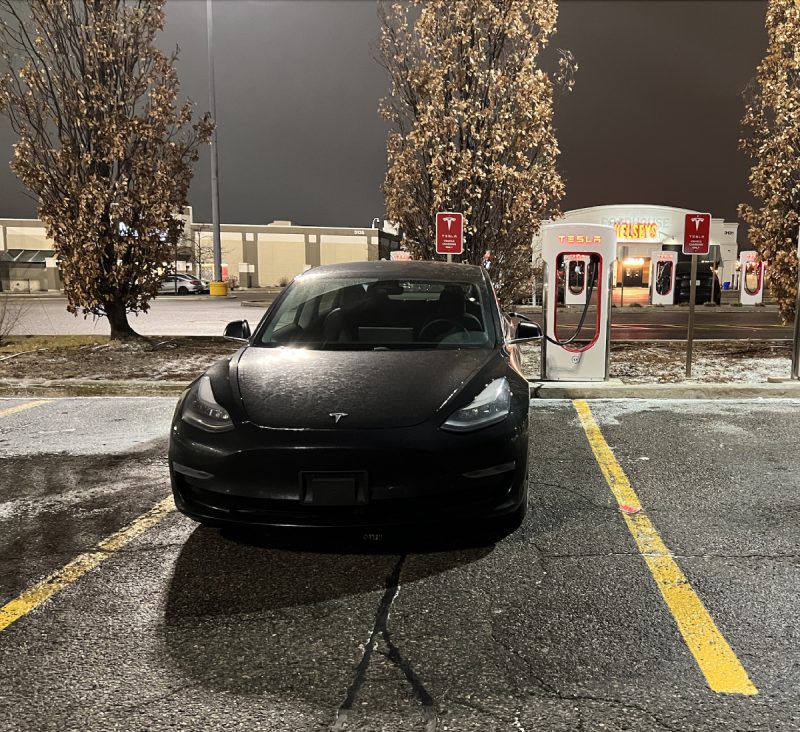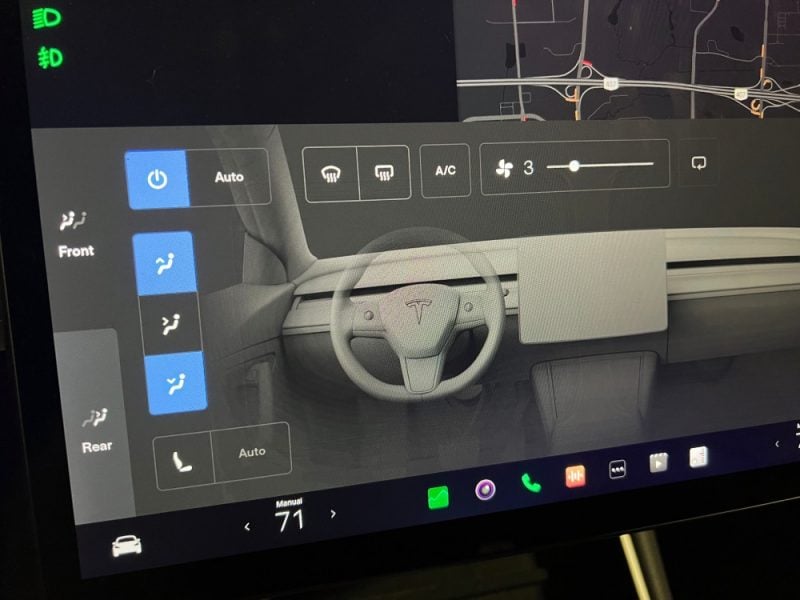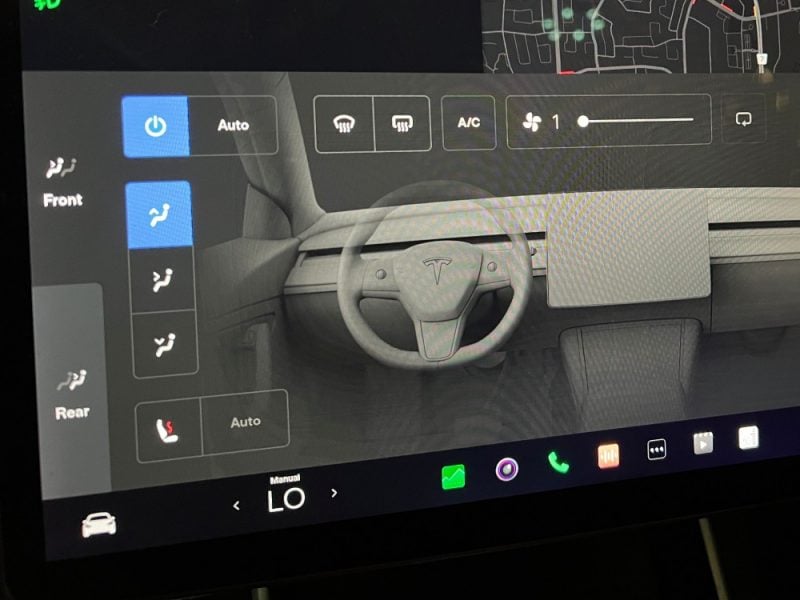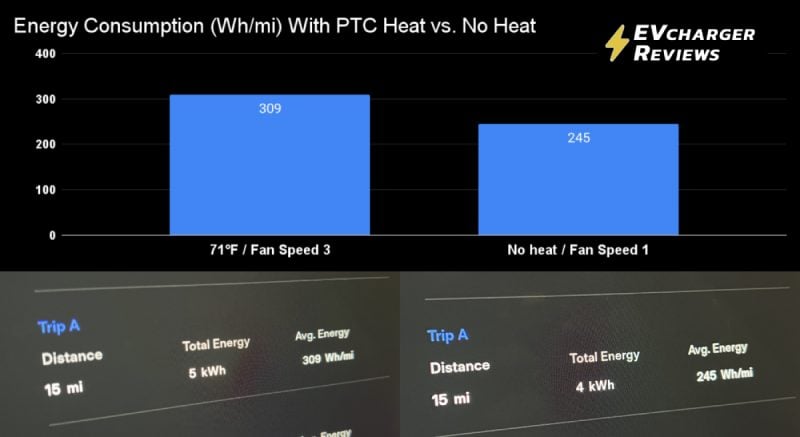Electric cars generally fall into two categories when it comes to heating the cabin in cold weather: PTC electrical resistance heat in less expensive EVs, and heat pump HVAC systems in more expensive and sophisticated EVs. PTC heating is more cost effective to manufacture but requires significantly more energy to operate. How much extra energy is spent when a PTC heater is operating, and how much less range can you expect in cold winter months? We decided to find out.
For this experiment, we used a 2019 Tesla Model 3 SR+. This is an earlier iteration of the Model 3 that did not include a heat pump and octo-valve thermal management system of the latest models.
Results
As seen in the chart above, on our 15 mile test loop the car consumed 309 Wh/mi with generous cabin heating vs. 245 Wh/mi with no heat and only fans blowing on the windshield. That represents a significant 26% increase in energy consumption per mile driven!

Methodology
- We had two back to back runs of the same 15-mile loop after brief Supercharger top ups.
- The first and last mile of the test loop is 40 mph town road, and the remainder of the distance was driven at freeway speed with cruise control set at 70 mph
- The exterior temperature was 30 degrees Fahrenheit and a calm 5 mph wind conditions throughout the testing period.
- The ground was consistently moist, but no precipitation during the test
- In the run with heat, the HVAC was set to 71 degrees Fahrenheit and the fan speed 3. No seat heat was used.
- In the run without heat, the HVAC temperature was set to LOW and the fan speed was set to 1 to blow air over the windshield to prevent fogging. Seat heating was set to Auto for driver comfort.
Conclusion
A 26% increase in energy consumption is significant enough to require more frequent charging stops on road trips. Unless the passengers cut back on heating, it would mean that a 240 mile EV will have an effective winter range of approximately 177 miles on a full charge in freezing temperatures.
If you reside in colder climates, this is something to keep in mind when shopping for an electric car. You are likely to come across PTC heaters in older second hand Teslas and brand new lower-cost EVs.
Premium EVs will include heat pump hardware which will significantly reduce heating energy consumption, but at a higher upfront purchasing cost. We intend to repeat the same experiment in the future with a heat pump equipped car. In fact, with these specific testing parameters, a heat pump equipped Tesla should only marginally increase energy consumption on a 15 mile trip because the high-voltage battery would be hot after a DC charging session. This heat in the battery pack can be captured and released into the cabin.
Stay tuned for more experiments…



